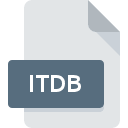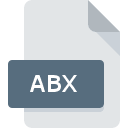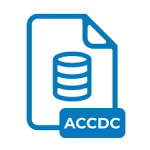.ITDB File Extension

iTunes Database File
| Developer | Apple |
| Popularity | |
| Category | Database Files |
| Format | .ITDB |
| Cross Platform | Update Soon |
What is an ITDB file?
.ITDB files serve as the backbone of the iTunes application, storing essential information about the user’s media library.
These files encompass metadata, playlists, ratings, play counts, and other organizational data necessary for efficiently managing multimedia content within the iTunes ecosystem.
Essentially, they act as a catalog or index that enables quick access and organization of media files stored on a user’s device.
More Information.
The introduction of .ITDB files marked a pivotal moment in the development of iTunes, streamlining the management of vast music libraries and multimedia collections.
Initially designed to store metadata, playlists, ratings, and other essential information associated with media files, .ITDB files enabled users to organize their digital libraries with unparalleled precision.
Moreover, the database served as the foundation for features like Smart Playlists, Genius Recommendations, and iTunes Match, enhancing the overall user experience.
Origin Of This File.
The genesis of .ITDB files can be traced back to the inception of iTunes, Apple’s proprietary media player and library management software.
Originally released in 2001, iTunes revolutionized the way users interacted with digital media, offering a seamless platform for purchasing, organizing, and enjoying content.
As iTunes evolved over the years, so did the complexity of its underlying database structure, giving rise to the .ITDB file format.
File Structure Technical Specification.
.ITDB file is a structured database file, typically encoded in a proprietary format optimized for rapid access and efficient data retrieval.
While the exact specifications of .ITDB files are proprietary and subject to change across different versions of iTunes, they generally adhere to relational database principles, featuring tables, columns, and indices for organizing and querying data. Key components of the .ITDB file structure include:
- Metadata Tables: These tables store information about media files, including their titles, artists, albums, genres, durations, and file paths.
- Playlist Tables: Playlist tables contain data pertaining to user-created playlists, such as their names, contents, order, and associated metadata.
- Rating Tables: Rating tables track user ratings and preferences for individual tracks, albums, or artists, enabling personalized recommendations and playlists.
- Index Files: Index files optimize data retrieval by providing efficient access paths to frequently queried information, reducing the time required for searches and lookups.
While the internal organization of .ITDB files may vary based on the specific version of iTunes and user preferences, they generally maintain a consistent schema to ensure compatibility and interoperability across different platforms.
How to Convert the File?
Converting .ITDB files to alternative formats or platforms can be challenging due to their proprietary nature.
Sveral methods exist for extracting data from .ITDB files or migrating to alternative media management solutions:
- Export to XML: iTunes offers an option to export library data, including playlists, ratings, and metadata, to XML files. While not a direct conversion from .ITDB, this method enables users to extract and transfer their media library information to other applications or platforms that support XML-based import.
- Third-Party Tools: Various third-party tools and utilities specialize in extracting data from iTunes libraries or converting .ITDB files to alternative formats. These tools often provide options for exporting playlists, metadata, and ratings to formats compatible with other media players or library management software.
- Manual Migration: For users seeking a more hands-on approach, manual migration involves recreating playlists, ratings, and metadata in alternative media management applications. While time-consuming, this method offers complete control over the migration process and ensures data fidelity.
Advantages And Disadvantages.
Advantages:
- Efficient Data Management: .ITDB files offer a centralized repository for storing and organizing media metadata, simplifying the management of large music libraries and multimedia collections.
- Enhanced User Experience: By leveraging .ITDB files, iTunes delivers seamless features like Smart Playlists, Genius Recommendations, and iTunes Match, enriching the overall user experience and personalization options.
- Cross-Platform Compatibility: While primarily associated with macOS and Windows environments, .ITDB files can be accessed and manipulated across various operating systems using compatible software tools and libraries, ensuring broad compatibility and interoperability.
Disadvantages:
- Proprietary Format: The proprietary nature of .ITDB files limits transparency and accessibility, hindering third-party developers’ ability to innovate and integrate with iTunes seamlessly.
- Data Integrity Risks: As with any proprietary file format, .ITDB files are susceptible to data corruption and compatibility issues, especially when migrating between different versions of iTunes or operating systems.
- Limited Extensibility: While .ITDB files excel at managing music metadata and playlists, they may lack the extensibility and flexibility required for handling emerging media formats and evolving user preferences effectively.
How to Open ITDB?
Open In Windows
- iTunes: .ITDB files can be opened directly using iTunes, Apple’s native media player and library management software, available for Windows. Simply launch iTunes, and it should automatically detect and load your .ITDB file, allowing you to access your media library.
Open In Linux
- Third-Party Software: While iTunes is not officially supported on Linux, you can explore alternative media players such as Rhythmbox, Clementine, or Banshee. While these applications may not directly support .ITDB files, they offer features for managing music libraries and may provide compatibility with iTunes library data through manual import or third-party plugins.
Open In MAC
- iTunes: On macOS, .ITDB files can be opened directly using iTunes. Launch iTunes on your Mac, and it should automatically detect and load your .ITDB file, giving you access to your media library and associated metadata.
Open In Android
- Third-Party Apps: While iTunes is not available on Android, you can explore third-party apps like doubleTwist, iSyncr, or MusicBee. These applications allow you to sync your iTunes library with your Android device, providing access to your media files, playlists, and metadata.
Open In IOS
- iTunes: On iOS devices, .ITDB files are typically not directly accessible. However, you can sync your iTunes library with your iPhone, iPad, or iPod Touch using iTunes on your computer. Once synced, you can access your media files and playlists through the Music app on your iOS device.













